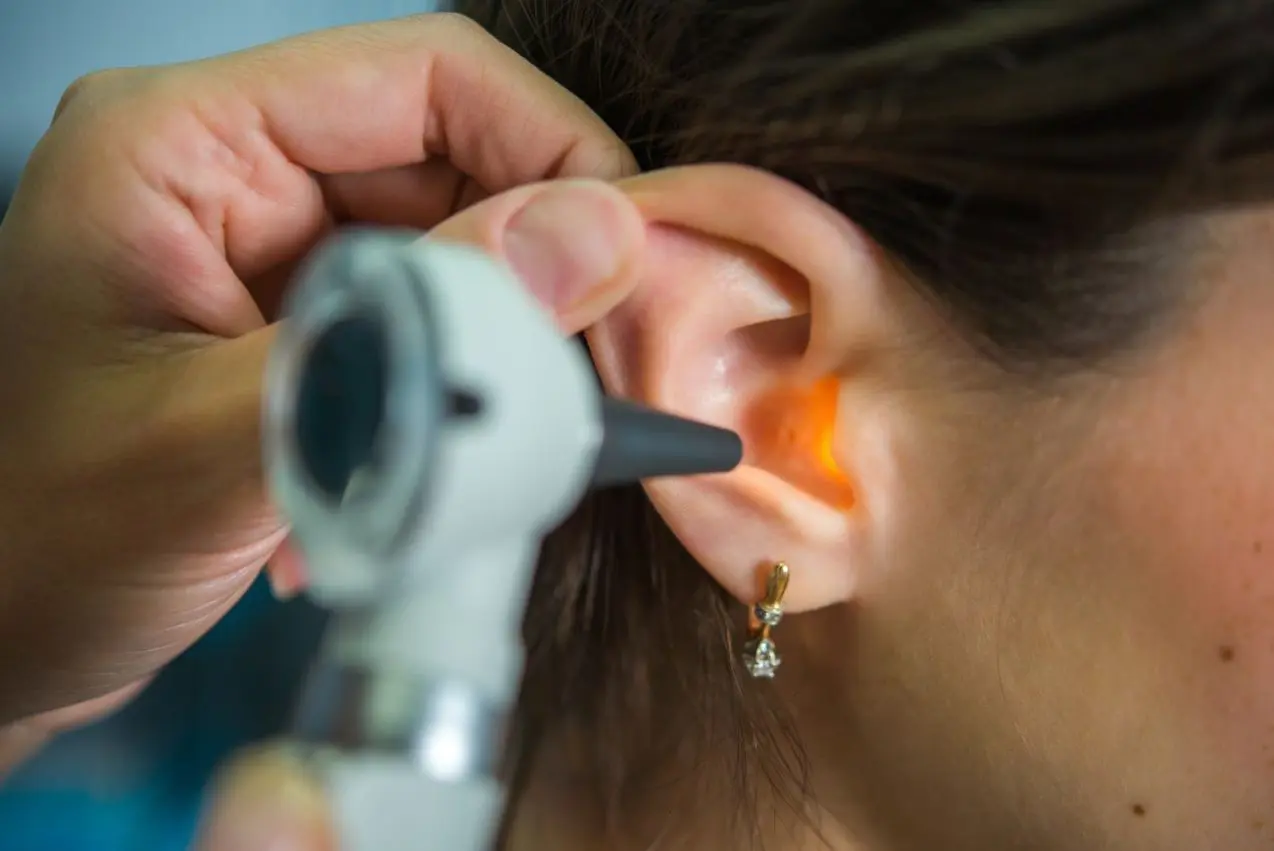A 64-year-old woman in Taiwan was disturbed from sleep for several nights by strange noises and sensations in her left ear, only to discover the startling source - a live spider and its shed exoskeleton dwelling inside her ear canal. Documented in a recent case study in the New England Journal of Medicine, the arachnid intruder measured just 2-3 millimeters, or around 1/10 inch. But its movements and activity generated disturbing sounds described as “abnormal beating, clicking and rustling.”
Beyond disrupted sleep, the woman reported feeling a “creature moving” inside her ear over several days. The sensations prompted her to visit an ear, nose and throat specialist, where physicians made the skin-crawling discovery via endoscope. While surprising, experts note various small bugs and objects often lodged in ear canals require removal. But a spider actively inhabiting the channel still proves relatively rare.
According to the study’s co-author Dr. Tengchin Wang, the miniature spider likely entered the ear canal while the woman slept. Her lack of pain from its residence suggests the species poses little toxicity or bite risk to humans. Still, the arthropod’s clingy location doubtlessly unsettled the patient once uncovered. NBC News covered the account as well, noting that while molted exoskeletons inside ears mark unfamiliar terrain for ENTs, foreign bodies like insects require occasional extraction.
Footage shared on Instagram by Today captured the spider’s final moments before evacuation via suction. The brief video reveals the tiny arachnid emerging into view near the ear canal’s opening as physicians employ a penlight and endoscopic camera. The creature’s leg span nearly bridges the circular cavity despite its minute size. The visual illustrates how even small spiders can generate magnified noises in compact ear tunnels.
The patient’s ordeal highlights several alarming realities. First, that spiders and other minute organisms can access human ear canals while we sleep. The openings remain exposed, allowing opportunistic invaders who detect appealing shelters. And once inside, ear structures efficiently transmit vibrations from tiny disturbances. So while the spider itself posed little danger, its activities still created unnerving sensations over several days. Even without bites or stingers, spiders prompt unease near vulnerable membranes.
The case also demonstrates the diagnostic power of modern visual technologies. Without endoscopic cameras, such spiders likely went undiscovered in earlier eras. Patients’ reports of odd sounds or feelings had no ready explanations absent actual footage from inside. But fiber-optic imaging now grants doctors clear confirmation of even unlikely internal causes. We know this woman’s precise source of discomfort thanks to peering within.
Finally, the surprising discovery speaks to ongoing mysteries around the behavior of various spider species. Researchers remain unsure what attracted the spider into the appealing crevice. Did it simply stumble upon the portal and investigate? Or do certain varieties seek large animals for potential prey sources or other needs? The study’s authors acknowledge lacking sufficient spider expertise to speculate on its motives. But the incident provokes curiosity on exactly why an arachnid might select the warm, damp corridors of the human inner ear over less obtrusive options. What evolutionary pathways lead spiders into the ears or nasal passages of large sleeping mammals? Whatever this creature’s aims, its sheltered location clearly overloaded the auditory facilities it had coopted.
While the common suggestion to leave one ear uncovered during sleep aims preventing this exact uncomfortable scenario, the approach proves easier proposed than implemented. Tossing and turning often leads both ears pressed into pillows despite best intentions. So monitoring for odd sensations in ears perhaps offers the most immediately actionable defense against arthropod invasions. Sudden sounds or feelings of motion should spark deeper investigation, not dismissal. And any onset of new nocturnal discomfort certainly warrants inspection rather than anxiety. The Taiwan woman wisely contacted physicians once her symptoms persisted and amplified.
Vigilance also includes decluttering environments where spiders reside to limit encounters. Their attraction remains mysterious, but cohabiting spaces ensure occasional incidental brushes with people. Monitoring for webs in sleepy corners or crevices allows preemptively blocking off potential nesting spots. This gentle discouragement humanely prevents both human and spider from future meetings gone wrong. Because while the ear-dweller itself appeared benign, its presence still created an ordeal requiring eviction.
In sum, this jarring external confirmed narrative reminds never fully taking body security for granted. Past assumptions on insect behavior still fail predicting their actions amid changing climates and habitats. And modern medicine continues revealing previously unfathomable organic causes for sensations long brushed off as phantom or psychological. When the body sounds alarms, modern people have tools like endoscopes for investigating and validating experiences. Had this woman lived decades ago, her complaint might have gone unproven despite evident suffering. We now know to look closer – sometimes discovering the surprisingly simple sources creating outsized discomfort in overlooked locales. Everything making up environment can interact, for better or worse, often seeking only stability. But what provides sanctuary for one creature may likewise disrupt another. The key remains responding judiciously when signals suggest addressing invasions, externally or within.

 Trump has begun another trade war. Here's a timeline of how we got here
Trump has begun another trade war. Here's a timeline of how we got here
 Canada's leader laments lost friendship with US in town that sheltered stranded Americans after 9/11
Canada's leader laments lost friendship with US in town that sheltered stranded Americans after 9/11
 Chinese EV giant BYD's fourth-quarter profit leaps 73%
Chinese EV giant BYD's fourth-quarter profit leaps 73%
 You're an American in another land? Prepare to talk about the why and how of Trump 2.0
You're an American in another land? Prepare to talk about the why and how of Trump 2.0
 Chalk talk: Star power, top teams and No. 5 seeds headline the women's March Madness Sweet 16
Chalk talk: Star power, top teams and No. 5 seeds headline the women's March Madness Sweet 16
 Purdue returns to Sweet 16 with 76-62 win over McNeese in March Madness
Purdue returns to Sweet 16 with 76-62 win over McNeese in March Madness








